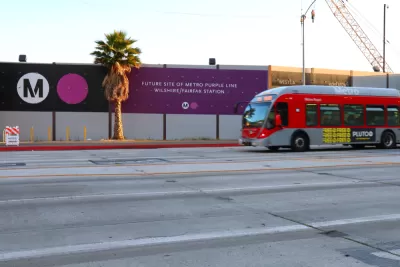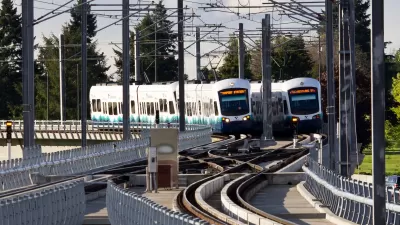The Eno Center for Transportation launched the first institutional investigation of the cost of transit projects earlier this year and recently released its initial findings, with promises for more in-depth case studies to come.

The Eno Center for Transportation released the first product of an initiative launched in late 2019 to study the high cost of public transit projects in the United States, building on the momentum of new public and media attention to the problems of transit construction.
The initial public offering is a database of transit capital construction projects, including "construction cost and timeline data for a total of 171 domestic and international rail transit projects completed over the past 20 years," according to an article on the Eno website that shares insights into the database. "For each project, factors such as number of stations, grade alignment, station spacing, and mode allow for deeper comparisons."
The article lists five key takeaways from the new database:
- Light rail is not necessarily cheaper than heavy rail. Grade alignment, rather than mode, is the major determinant of cost.
- Many rail projects in the United States are relatively inexpensive
- The United States pays a premium for tunneled projects
- Cost variability increases significantly for tunneled projects
- Stations are expensive, but international projects include more of them
More details for each of those takeaways are included in the source article, as well as promises for further research.
FULL STORY: FIVE TAKEAWAYS FROM ENO’S TRANSIT CAPITAL CONSTRUCTION DATABASE

Maui's Vacation Rental Debate Turns Ugly
Verbal attacks, misinformation campaigns and fistfights plague a high-stakes debate to convert thousands of vacation rentals into long-term housing.

Planetizen Federal Action Tracker
A weekly monitor of how Trump’s orders and actions are impacting planners and planning in America.

In Urban Planning, AI Prompting Could be the New Design Thinking
Creativity has long been key to great urban design. What if we see AI as our new creative partner?

Cal Fire Chatbot Fails to Answer Basic Questions
An AI chatbot designed to provide information about wildfires can’t answer questions about evacuation orders, among other problems.

What Happens if Trump Kills Section 8?
The Trump admin aims to slash federal rental aid by nearly half and shift distribution to states. Experts warn this could spike homelessness and destabilize communities nationwide.

Sean Duffy Targets Rainbow Crosswalks in Road Safety Efforts
Despite evidence that colorful crosswalks actually improve intersection safety — and the lack of almost any crosswalks at all on the nation’s most dangerous arterial roads — U.S. Transportation Secretary Duffy is calling on states to remove them.
Urban Design for Planners 1: Software Tools
This six-course series explores essential urban design concepts using open source software and equips planners with the tools they need to participate fully in the urban design process.
Planning for Universal Design
Learn the tools for implementing Universal Design in planning regulations.
Appalachian Highlands Housing Partners
Gallatin County Department of Planning & Community Development
Heyer Gruel & Associates PA
Mpact (founded as Rail~Volution)
City of Camden Redevelopment Agency
City of Astoria
City of Portland
City of Laramie





























